The Darkhorse Dozen: 12 Underrated Players Primed to Become Breakout Stars in March
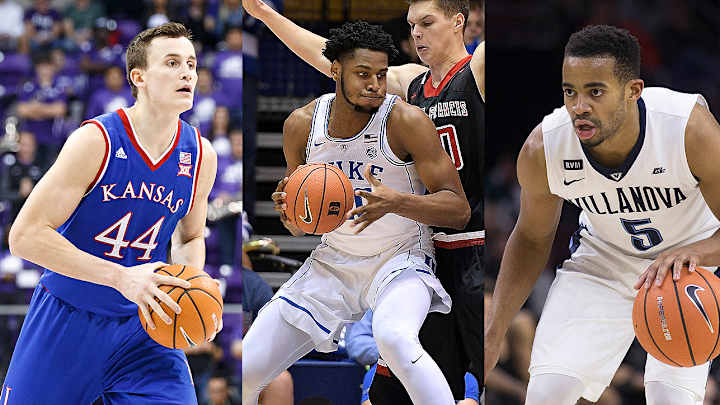
Stars are made during just about every deep tournament run and in retrospect, many of them are obvious. If someone had told you beforehand that Villanova was going to win the 2016 tournament, it would not have been a stretch to guess Ryan Arcidiacono might have been the tourney’s Most Outstanding player. Ditto Joel Berry II with North Carolina last season, or Tyus Jones for Duke three years ago, or Shabazz Napier for Connecticut the year before that.
But if a team is going to make a deep run and eke out March’s unforgivingly small margins, it will often need star turns—sometimes for a game, sometimes for a moment—from its supporting cast. Arcidiacono isn’t MOP if Phil Booth doesn’t score a career-high 20 points off the bench. Neither is Berry if Luke Maye doesn’t hit the shot of his life in the Elite Eight, nor Jones if then-afterthought Grayson Allen doesn’t explode off the bench in the championship game, nor Napier if freshman reserve Amida Brimah doesn’t send the Huskies’ first-round game to overtime with an and-one put-back.
With that in mind, this week we present a different sort of March Madness cheat sheet: SI’s Darkhorse Dozen, 12 relatively less-heralded players on contending teams who could make themselves known in pivotal moments come tourney time.
Mamadi Diakite, Virginia
The 6’9” sophomore has not been the shot-blocking presence he was last season—his block rate is down from a massive 12.1% to a solid 4.3%—but he has become an efficient source of offense of late, making 20 of 29 field goals since the start of February. He could be on the verge of a breakout.
Marques Bolden, Duke
Though the Blue Devils are not exactly short on offensive talent, their backup big is not typically chief among them. But Bolden has been remarkably efficient in ACC play since returning from a three-week knee injury, making 76.0% of his field goals for an eye-catching 139.1 offensive rating in 14.2 minutes per game. Should Marvin Bagley III and/or Wendell Carter be limited, Bolden could provide an offensive jolt in reserve.
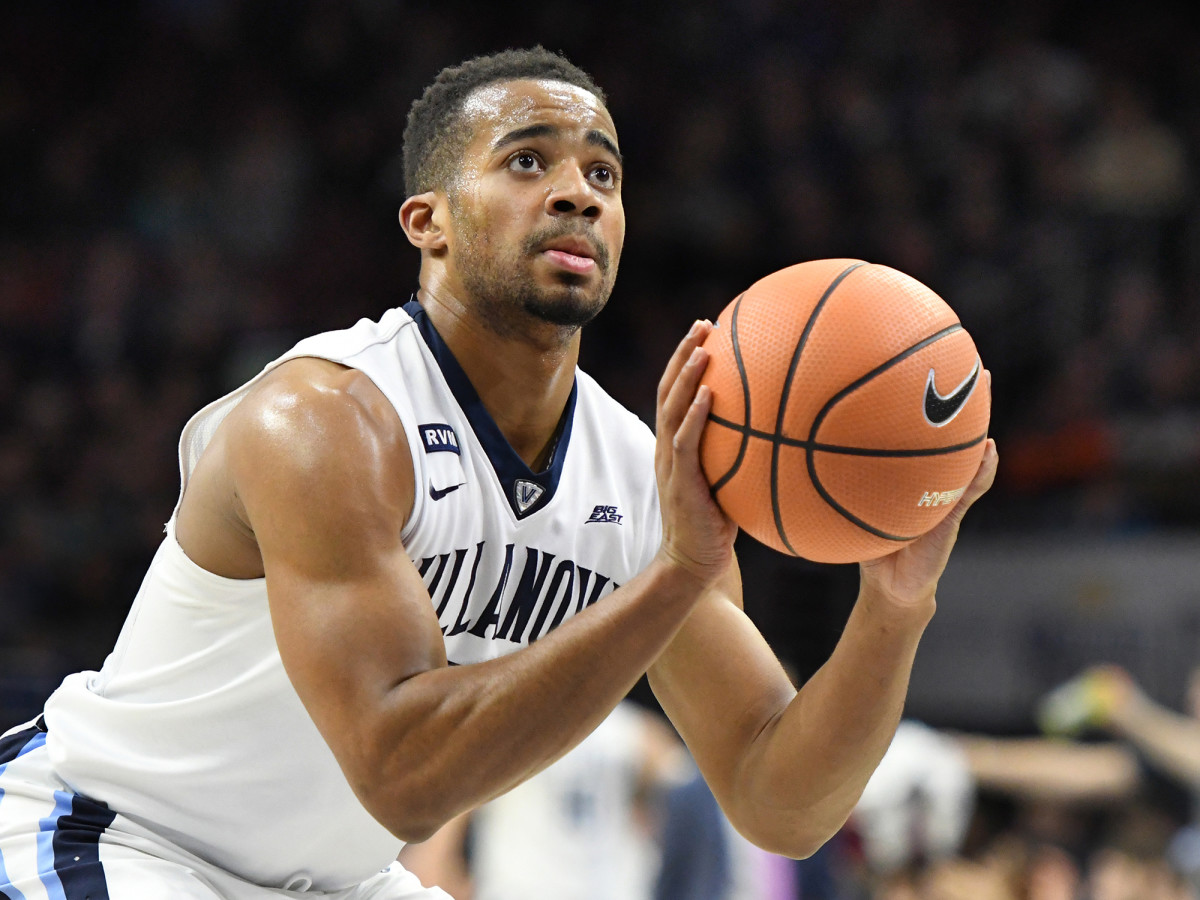
Phil Booth, Villanova
Two years after that breakout title game, Booth is still something of a role player—he’s fourth among Wildcats in points per game—who is capable of making a leading-man scoring impact. He recently missed seven games with a broken right (shooting) hand and is in a three-game shooting slump, but should Booth regain his usual form, he can be a dangerous complementary weapon, as on Jan. 10, when he scored 21 points on 11 shots vs. Xavier, or the 20 points on 14 shots he contributed against Gonzaga in December.
Sterling Manley, North Carolina
You may best know him from the clip Louisville forward Dwayne Sutton’s dismaying reaction to Manley checking back into a game last month, which made the social media rounds. The 6’11” freshman plays just 10.5 minutes per game, but his 15.7% offensive rebounding rate would rank sixth nationally if he saw enough time to qualify.
Matt McQuaid, Michigan State
A spot-up specialist who averages 1.33 points per such possession, which ranks in the 97th percentile nationally, McQuaid can lurk on the wings and make teams pay when their focus is elsewhere. He averages just 6.2 points, but can make them count: see last week’s buzzer-beater to bounce Wisconsin from the Big Ten tourney.
Tyrique Jones, Xavier
A starter until a mid-January shoulder injury, Jones is now on the shorter end of the Musketeers’ three-man rotation at the five, but was averaging 9.4 points and 5.7 rebounds through the end of December. If things rotate his way in March, he’s capable of making that kind of impact.
P.J. Thompson, Purdue
The 5’10” senior guard has started every game but uses just 11.8% of the Boilermakers’ possessions while on the floor, second-lowest on the entire team. Yet should a team de-emphasize defending him to contain Purdue’s other weapons, Thompson can make them pay. He shoots 43.8% from three and, as Vincent Edwards told me last month, “P.J.’s always on time. Whenever we need a big shot, he’s there.”
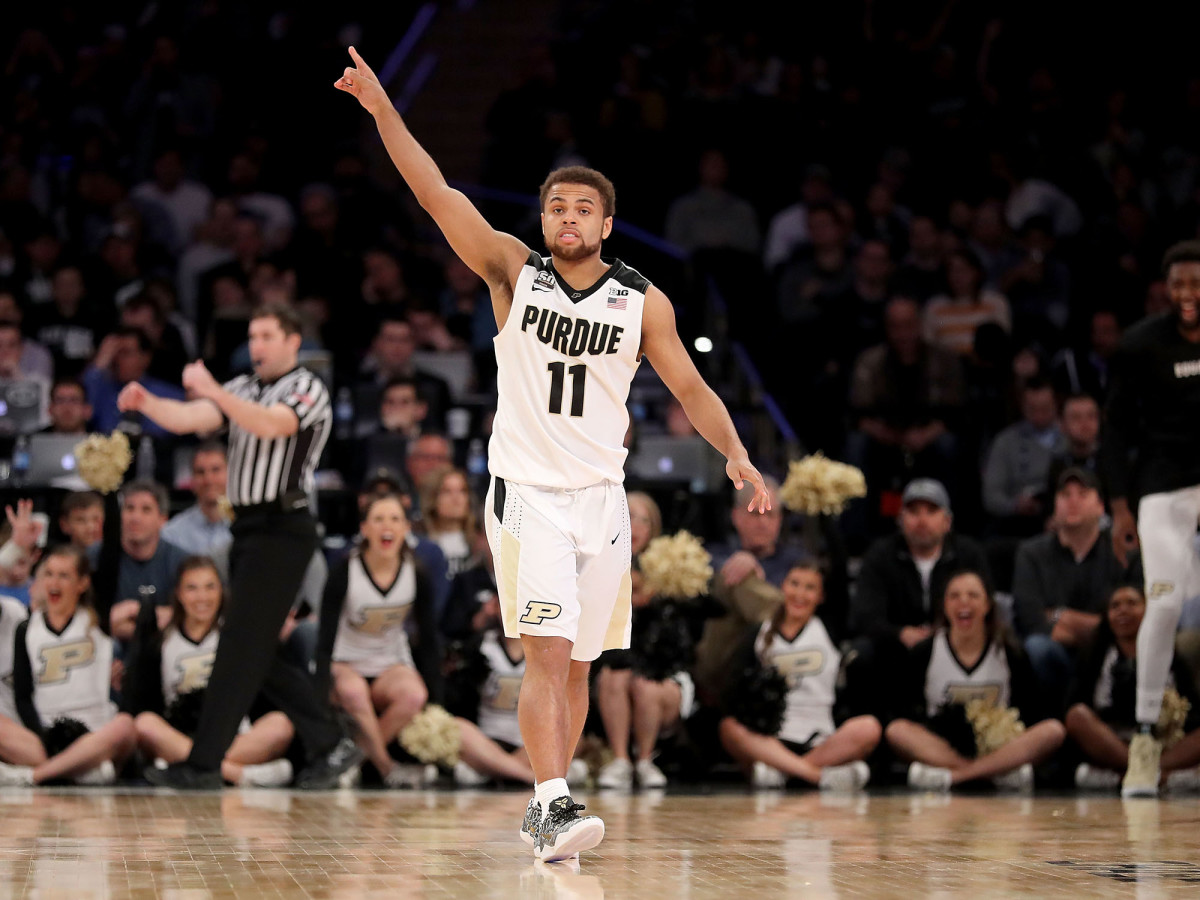
Mitch Lightfoot, Kansas
Udoka Azubuike has emerged as a force for the thin-inside Jayhawks, but should he get into foul trouble, Lightfoot could be put on the spot to hold down the post for pivotal stretches. On a team that so seldom relies on its bench, Lightfoot is the one most likely to pressed into important action.
Cane Broome, Cincinnati
If the defensive-minded Bearcats are going to make a run, their offense will need to step up, and Broome, a 6-foot transfer from Sacred Heart, is one of the most likely candidates to help it do so. He’s a 42.9% three-point shooter and trending in the right direction: four of his 12 double-figure scoring games have come in the last 15 days.
Kyle Alexander, Tennessee
Guess who was the most efficient offensive player in SEC play? Well, you probably wouldn’t have guessed Alexander had the question not been in this blurb. A strong rebounder on both ends, talented shot-blocker, and a 68.8% shooter from the field, Alexander has a variety of ways to make an impact.
Davion Mitchell, Auburn
This one’s a bit of a shot in the dark. But on such a young team plowing through all kinds of issues to overachieve, why not take a gamble on the freshman combo guard with turnover issues and tempting talent? According to Kenpom.com, Mitchell has actually played slightly better against Tier A opponents (20.5% assist rate, 19.9% turnover rate) than overall (18.8% assist rate, 28.4% turnover rate). Perhaps that bodes well.
Jon Teske, Michigan
The 7’ 1” sophomore took kindly to the grand stage of a Big Ten championship game at Madison Square Garden, scoring 12 points—nearly quadruple his per-game average—before halftime. Should Mo Wagner find himself in foul trouble (a problem at times) Teske seems comfortable filling in.
• Get Your Michigan 2018 Big Ten Championship Gear Here
If you are wondering what exactly you are reading, this is the Monday Rebound, SI.com’s weekly Monday column on college hoops. It’s a sort of a grab-bag of news and tidbits and opinions largely aimed at catching you up on the weekend’s (and week’s) action and being generally informative. If there’s anything you like or dislike or would want to see more of here, or if you would just like to congratulate me on my smashing success as a film critic, you can find me on Twitter @thedangreene. Thanks for reading.
ICYMI
Duke beat North Carolina on Saturday, holding the Tar Heels to their third-worst offensive showing of the year (0.91 points per possession), after their Jan. 6 loss at Virginia and Nov. 26 loss to Michigan State. In doing so, the Blue Devils made clear perhaps the most important tourney-prediction development of the past month: suddenly Duke can really defend.
“Remember when you all said we couldn’t play defense but we could play offense?” Mike Krzyzewski asked reporters after Saturday’s win. “Now you’re saying we can play defense and we can’t play offense.” While the latter notion is still not too much of a long-term concern—although this most recent three-game stretch was Duke’s worst, offensively speaking, this season—the Blue Devils turning their glaring weakness on D into a legitimate strength (they rank second in defensive efficiency during ACC play) is truly remarkable. The biggest reason for the turnaround is also the simplest: Krzyzewski has more or less fully committed to a 2–3 zone that showed flashes of promise earlier in the season, while moving 6’10” sophomore forward Javin DeLaurier into the starting lineup to help bolster that zone’s back line.
After entering February with a defensive efficiency ranking in the 70s, the Blue Devils are now up to 10th. If your perception of Duke’s defense is based on the season-long talk by so many (including yours truly) of how their defense is not championship-caliber, it’s time for an update.
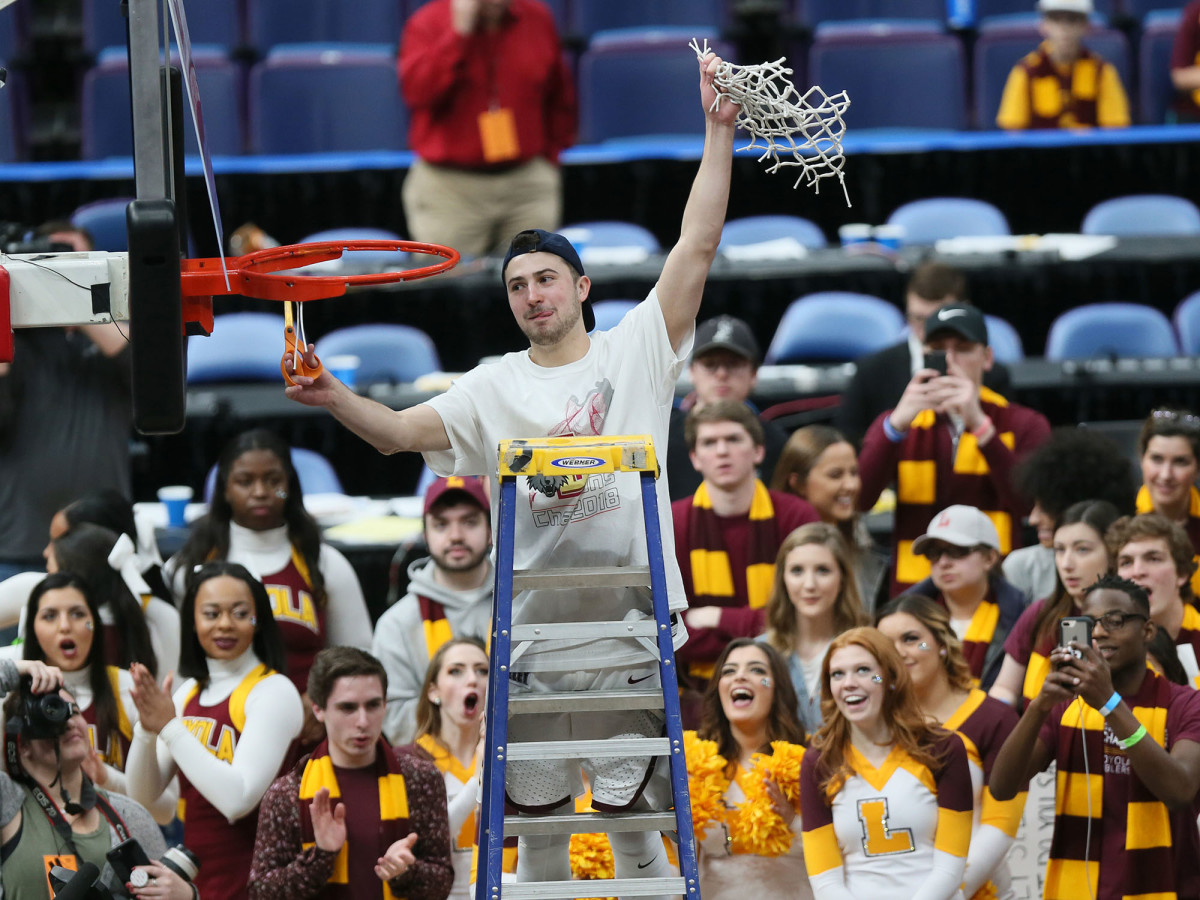
High Five
1. Michigan: For the second straight March, the Wolverines won four games in four days—having missed out on one of their league’s four byes—to claim the Big Ten tournament crown, downing fresher-legged Michigan State and Purdue in the process. John Beilein’s team might be peaking at the right time.
2. Murray State: What better way to extend the nation’s longest winning streak (13 games) than by wrapping up an automatic NCAA tourney bid? The Racers have not lost since Jan. 18; a month earlier, they gave Auburn a run for its money before losing by four. Keep them in mind when eyeing 5–12 or 4–13 first-round upsets.
3. Radford: It’s unlikely we’ll see a tourney bid earned more dramatically than how the Highlanders beat Liberty to win the Big South: With the final two seconds of regulation ticking away, freshman Carlik Jones took a step in from the fringe of the halfcourt logo to drain a game-winning three, sending Radford dancing for the first time in nine years.
4. Loyola Chicago: The tourney’s most dangerous (likely) double-digit seed may hail from the Missouri Valley. The Ramblers, who rank 42nd nationally in adjusted overall efficiency, won the MVC tournament the way they like: slow (in a 59-possession game) and stingy (holding Illinois State to 49 points, or 0.83 per possession).
5. Lipscomb: The Bisons survived a scare in Sunday’s Atlantic Sun final when their 29-point halftime lead over Florida Gulf Coast melted all the way down to five points with seven minutes left. But no matter: Lipscomb, which made the jump to the NCAA from the NAIA in 1999, will be joining the Big Dance for the first time.
Top of the Classes
Senior: Peyton Aldridge, Davidson forward
His 45 points (including including 8-of-11 three-point shooting) and 12 rebounds weren’t enough to pull off a triple-OT win against St. Bonaventure on Tuesday, but his 18-and-12 showing led the way in a narrow upset of Rhode Island.
Junior: Mike Daum, South Dakota State forward
The Jackrabbits star was brilliant in his lone game last week, scoring 33 points while grabbing 19 rebounds in a Summit League quarterfinal win over Western Illinois. It was Daum’s 12th 30-point game of the season, most in the country.
Sophomore: Sa’eed Nelson, American guard
The Eagles’ stay in the Patriot League tournament lasted just one game, but it’d be hard to fault Nelson, who scored 41 points and dished nine assists in American’s loss to Lafayette. Three days earlier, he’d had a solid 15 and seven against Bucknell.
Freshman: Deandre Ayton, Arizona forward
There are plenty from which to choose, but Ayton’s 26-point, 20-rebound game against Cal on Saturday might have been his best collegiate performance yet. He’s now top-three during Pac-12 play in effective field goal percentage, offensive rebounding rate, defensive rebounding rate and fouls drawn per 40 minutes, plus fourth in overall offensive efficiency and fifth in shot-blocking rate.
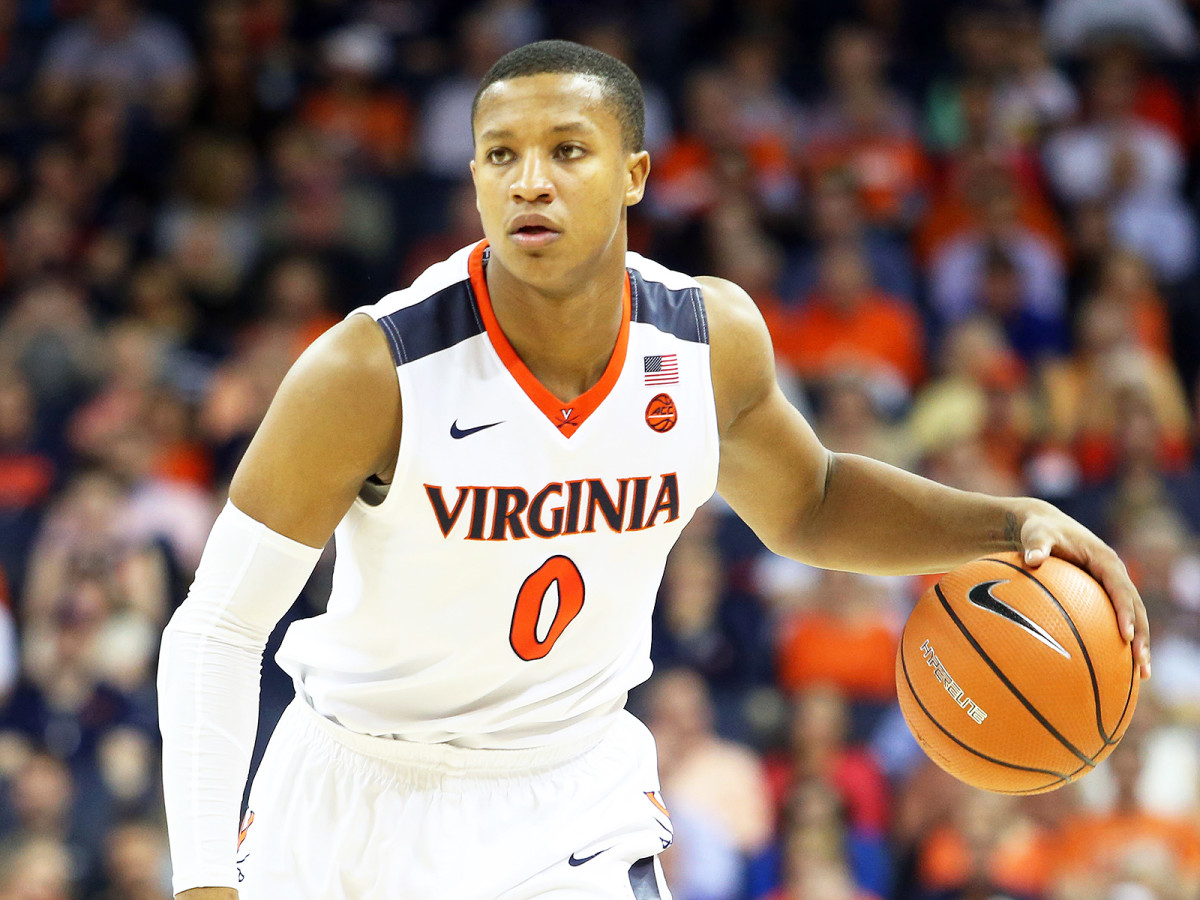
Bests of the Best
Each week, we’ll get to know a standout player a little better by asking them about some of the best things in the world. This week we welcome Virginia guard Devon Hall, who is averaging 11.9 points, 4.4 rebounds, and 3.2 assists for the Cavaliers. So, Devon, tell us about the best...
...vegetable. “Broccoli. Broccoli without question. I’ve always loved it. I used to do broccoli with cheese, but then I realized the cheese wasn’t good for you. When I got to college, I had to cut out the cheese.”
...class you’ve taken in college. “Any class with William Little. That’s my guy. I was a media studies major undergrad and any media studies class with him was great. He’s just very enthusiastic. He knows his stuff and encourages you to step outside your comfort zone and speak up in class. I enjoyed that. He made me feel more comfortable in class.”
...best decoration in your room. “I don’t have anything on my walls. It’s kind of weird, right? I just have a TV up on my wall. That’s a decoration that I’ve got up there. [In the living room] there are actually old posters of Malcolm [Brogdon], Anthony Gill, London [Perrantes]. They’re like stuck to the wall—if you took them off, it’d actually take part of the wall off. So we just left them up there. They’ve been there for a while.”
...secret talent you have. “I like to fish. It’s not really a talent, but it’s something I like to do. It’s relaxing. I started when I was young. I stopped for a while, then I found out there’s a guy up here who stocks his pond with bass and catfish and stuff, so I go with one of our guys, [team technology assistant] Johnny Carpenter, and fish there. Growing up we would fish out on the pier. Catch something, bring it up, play with it and throw it back. I went crabbing too a little bit when I was younger.”
Social Media Post of the Week
It’s been a long time coming my brothers, Senior Night is finally upon us 😂 #BBN pic.twitter.com/h3bsoNeXBo
— Karl-Anthony Towns (@KarlTowns) February 28, 2018
As the scandal turns...
Arizona’s usurping of Louisville as the epicenter of the FBI probe-based recruiting scandal continued this past week. First there was a confusing correction and then retraction of that correction by ESPN, concerning the timeline of its reporting that Wildcats coach Sean Miller was recorded on an FBI wiretap discussing a $100,000 payment to land Deandre Ayton. (Reporter Mark Schlabach had said on SportsCenter that the call was recorded in 2017, then ESPN corrected it to spring 2016, then retracted that.) Then, after Miller adamantly denied the report in a press conference, SI’s Michael McCann, citing a source familiar with the investigation, broke news of a further development. From McCann’s story: “Ayton is not the player on whose behalf former ASM Sports employee Christian Dawkins allegedly sought a payment from Miller, and Miller never pursued paying or made any payments to a recruit associated with Dawkins.” Miller also returned to coach Arizona this week, after sitting out the first game, at Oregon, following ESPN’s initial report.
Regardless of whatever may be revealed going forward, there have already been significant repercussions. After four-star point guard Brandon Williams decommitted from the Wildcats on Friday, Arizona has now lost the entirety of its three-player 2018 recruiting class, which also included top-30 recruits Shareef O’Neal (son of Shaq) and Jahvon Quinerly. That, coupled with another bit of news Miller shared after Saturday’s game that Ayton and guards Allonzo Trier and Rawle Alkins will enter the NBA draft this spring—makes it look like next season could be a rough one in Tucson.
Assigned Viewing: ACC finals, Saturday at 8:30 p.m. ET on ESPN
It’s impossible to know what the matchup will be five days out, but given the crop of teams atop the league, odds are it’s going to be a very good one. (We know it won’t be a third Duke-UNC meeting, since those two are on the same side of the bracket and would meet Friday night, should they play again.) The best possible matchup is between top seeds Virginia and Duke, two legitimate national title contenders who have met once this year, in a two-point Hoos win in Durham. But even if it’s, say, Miami vs. Clemson, you’ll be seeing two potential second-weekend teams playing with a championship on the line. That’s a pretty good appetizer for the next month.
Before You’re Dismissed...
• Thanks, Andy Staples, for filling in for me around these parts last week. I owe you a slab of meat in San Antonio.
• All that tough talk about how LaVar Ball wasn’t appreciative enough of his help when his son and two UCLA teammates were arrested for shoplifting in China, and a new ESPN report says the president didn’t do much of anything.
• Check out Chris Johnson’s look at the Big Ten tournament and what it might offer come tournament time.
• Weeks after he was asked to step aside as a result of an internal investigation into his treatment of players, Larry Eustachy reached a settlement with Colorado State last week to officially resign from his head coaching position.
• Some good news: Texas guard Andrew Jones, who has been undergoing treatment for leukemia, has been released from the hospital to continue outpatient treatment.
• One casualty of the Big Ten’s early conference tournament last week: the emotional wellbeing of Nebraska, which after losing to Michigan in the quarterfinals is in the midst of a nine-day wait to see if it will get off the bubble. The Huskers went 13–5 in league play and 22–10 overall, but have just one win in eight Quadrant 1 games. They’ll have a lot of teams to be rooting against this week.
• Congrats to Chicago State on its win over Missouri-Kansas City to avoid going 0–14 in WAC play, leaving Pittsburgh as the only team in the country to not win a game in its conference this season.
• If you’re looking for a short and surprising show to binge-watch before March gets fully underway, check out The End of the F***ing World on Netflix. It’s dark as hell, but endearing.
